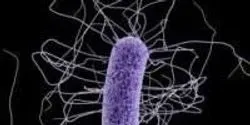human health

According to the public databases, there are currently approximately 1,900 locations in the human genome that produce microRNAs (miRNAs), the small and powerful non-coding molecules that regulate numerous cellular processes by reducing the abundance of their targets. New research published in the Proceedings of the National Academy of Sciences (PNAS) this week adds another roughly 3,400 such locations to that list. Many of the miRNA molecules that are produced from these newly discovered locations are tissue-specific and also human-specific. The finding has big implications for research into how miRNAs drive disease.

While debate about recreational marijuana use continues, researchers are investigating the effectiveness of cannabis for treating pain, spasticity, and a host of other medical problems. In a symposium organized by the McGill University Health Centre (MUHC) as part of the 2015 American Association for the Advancement of Science Annual Meeting held this week in San Jose, California, world-renowned experts from North America and the U.K. share their perspectives on the therapeutic potential of medical cannabis and explore the emerging science behind it.

A Washington University in St. Louis drug discovery program has received three grants totaling more than $5 million from the National Institutes of Health (NIH) to develop new therapeutics for respiratory diseases. The target illnesses range from the common cold to life-threatening lung disease.

Many people imagine robots today as clunky, metal versions of humans, but scientists are forging new territory in the field of 'soft robotics.' One of the latest advances is a flexible, microscopic hand-like gripper. The development could help doctors perform remotely guided surgical procedures or perform biopsies.















